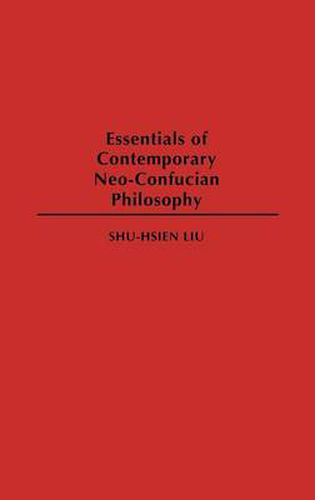Readings Newsletter
Become a Readings Member to make your shopping experience even easier.
Sign in or sign up for free!
You’re not far away from qualifying for FREE standard shipping within Australia
You’ve qualified for FREE standard shipping within Australia
The cart is loading…






This volume is the follow-up to Understanding Confucian Philosophy: Classical and Sung-Ming, which presented the first two Epochs of Confucian philosophy. The third Epoch, presented in this book, is that of Contemporary Neo-Confucian philosophy. It notes a paradigm shift from the late Ming to the early Ch'ing, which shows us how the line of Sung-Ming Neo-Confucian philosophy was broken. Then, background information is given to answer the question of how the phoenix was reborn from the ashes; at the height of the iconoclast May Fourth Movement in 1919, Liang Sou-ming, the forerunner of the movement, developed his ideas about East-West cultures and their philosophies. During the darkest moments of Chinese history, three generations of New Confucian scholars developed their ideas and achieved great scholarship. Shu-hsien Liu presents a framework of four groups to portray the movement. And, the philosophies of Fung Yu-lan, Hsuing Shih-li, Thome H. Fang, T'ang Chun-I, and Mou tsung-san are reviewed and analyzed. The international dimension of the third generation of New Confucians is also introduced. In the conclusion, Shu-hsien Liu comments on the relevance of this trend of thought today with a view toward the future.
$9.00 standard shipping within Australia
FREE standard shipping within Australia for orders over $100.00
Express & International shipping calculated at checkout
This volume is the follow-up to Understanding Confucian Philosophy: Classical and Sung-Ming, which presented the first two Epochs of Confucian philosophy. The third Epoch, presented in this book, is that of Contemporary Neo-Confucian philosophy. It notes a paradigm shift from the late Ming to the early Ch'ing, which shows us how the line of Sung-Ming Neo-Confucian philosophy was broken. Then, background information is given to answer the question of how the phoenix was reborn from the ashes; at the height of the iconoclast May Fourth Movement in 1919, Liang Sou-ming, the forerunner of the movement, developed his ideas about East-West cultures and their philosophies. During the darkest moments of Chinese history, three generations of New Confucian scholars developed their ideas and achieved great scholarship. Shu-hsien Liu presents a framework of four groups to portray the movement. And, the philosophies of Fung Yu-lan, Hsuing Shih-li, Thome H. Fang, T'ang Chun-I, and Mou tsung-san are reviewed and analyzed. The international dimension of the third generation of New Confucians is also introduced. In the conclusion, Shu-hsien Liu comments on the relevance of this trend of thought today with a view toward the future.